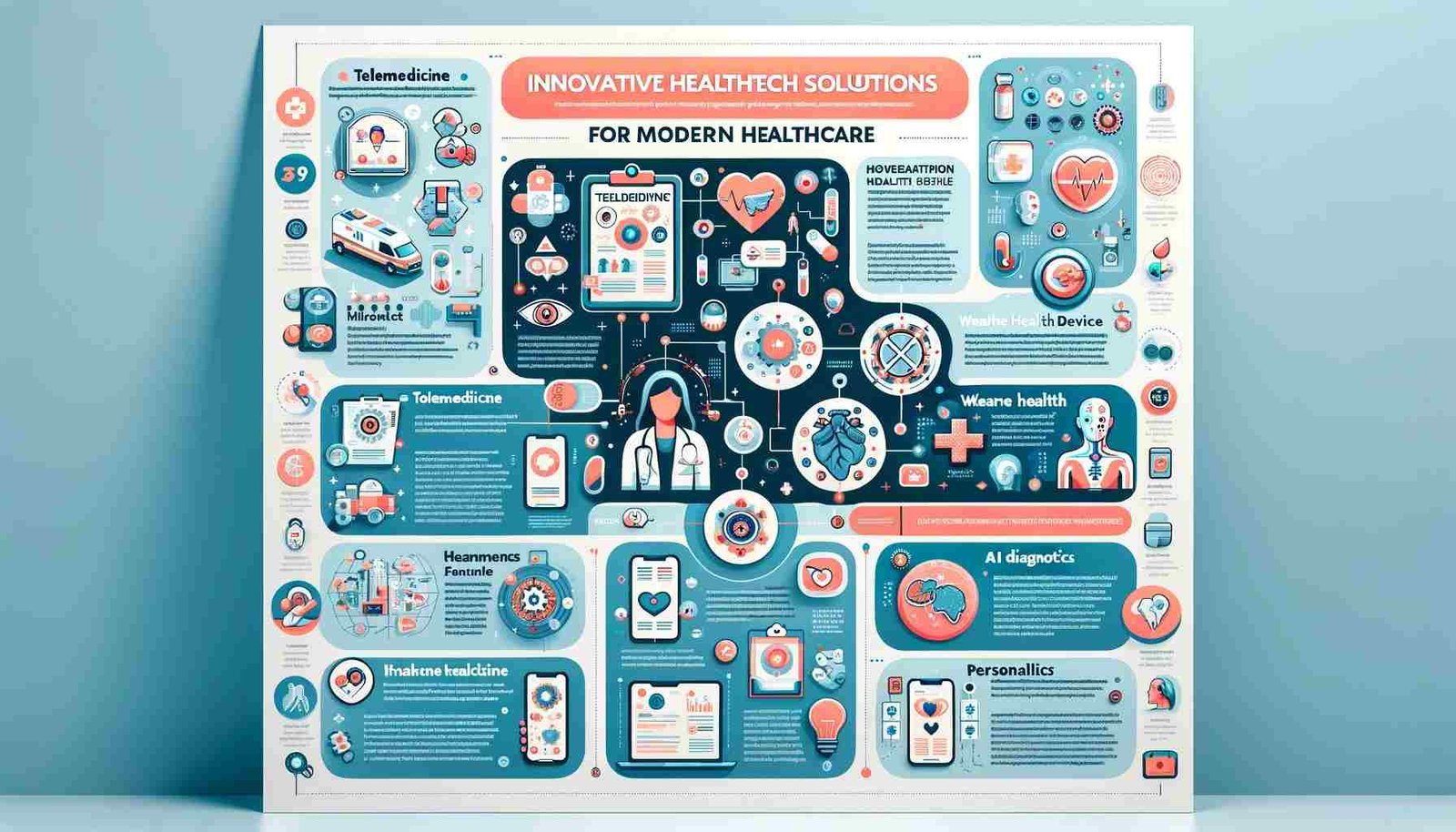In the landscape of modern medicine, telemedicine and health-related technologies are not just ancillary tools; they are vital components that are rapidly transforming the entire spectrum of healthcare. The digital revolution, fueled by advancements in information technology, artificial intelligence (AI), and mobile connectivity, is not a fleeting trend—it is the backbone of a new era in healthcare that promises greater access, improved outcomes, and personalized care delivery.
Technology and telemedicine are transforming the healthcare landscape, offering North Carolinians access to more efficient, effective, and convenient medical services than ever before. Before we dive in, let us start by understanding some basic terminologies.
Telehealth, telemedicine, and telenursing are terms often used interchangeably, but they have distinct meanings. Each represents a different aspect of the broader move towards providing health services remotely through the use of technology. Here is a breakdown of each term.
Telehealth
Telehealth is a broad term that encompasses all aspects of healthcare delivered remotely using telecommunications technology. It includes non-clinical services such as provider training, administrative meetings, and continuing medical education, in addition to clinical services. Telehealth aims to improve a community’s health and wellness by supporting healthcare education, public health, and health administration. It is not limited to direct patient care.
Telemedicine
Telemedicine is a subset of telehealth that refers specifically to the provision of healthcare services and education over a distance through the use of telecommunications technology. It involves using applications and electronic communications to offer clinical services to remote patients. It is typically used for follow-up visits, chronic disease management, specialist consults, medicine management, and other clinical services offered remotely through secure audio and video connections.
Telenursing
Telenursing refers to the delivery of nursing services through telecommunications technology. It is a specialized area within the wider field of telehealth and telemedicine. Telenursing involves the use of video conferencing, the internet, store-and-forward imaging, streaming media, and terrestrial and wireless communications for nursing practice. Nurses may use telenursing to conduct remote patient monitoring, provide education and support, and deliver direct care. It allows nurses to perform tasks such as assessments, symptom management, and patient education from a distance. Telenursing is particularly important in home healthcare scenarios and for reaching patients in remote areas who may not have easy access to healthcare facilities.
The digital landscape of North Carolina’s healthcare
North Carolina has often been a blend of the traditional and the progressive, with deep roots in the past yet eyes on the horizon. When it comes to healthcare, this balance is striking. While there are renowned institutions that represent the pinnacle of medical advancement, there remains a disparity in healthcare access, particularly in rural areas. However, in the digital age, the potential for telemedicine to bridge these gaps is enormous.
North Carolina has taken significant strides in integrating technology into healthcare delivery. This shift is propelled by both necessity and innovation. The COVID-19 pandemic, which necessitated social distancing and limited in-person medical consultations, acted as a catalyst for the rapid adoption of telemedicine services. In North Carolina, telehealth services saw an exponential increase in use.
The federal government, along with state governments, including North Carolina, enacted emergency measures to relax regulations around telehealth. The Centers for Medicare & Medicaid Services (CMS) were pushed to implement some Medicare telehealth changes in policy replicated across the state during the pandemic. These included allowing cross-state licensure for providers, expanding the types of services that could be reimbursed, and permitting the use of non-HIPAA-compliant platforms under certain circumstances.
Private insurers and Medicaid expanded coverage for telehealth services. The CARES Act also provided funding to support telehealth expansion, facilitating provider’s adoption of telehealth solutions. There was a surge in investment in digital health technologies, with many startups and established companies innovating in this space to support the increased demand for telehealth services. With the increase in telehealth usage, there was a heightened focus on ensuring data security and patient privacy, accelerating the development of more secure telecommunication platforms.
According to the North Carolina Department of Health and Human Services, Medicaid processed 1.1 million telehealth visits and 350,000 telephone visits in 2020. Post-pandemic, these services have continued to expand, propelled by their convenience and effectiveness. This expansion is supported by a favorable regulatory environment. North Carolina lawmakers have passed legislation to enhance telehealth accessibility and insurance coverage, including 2021 Senate Bill 505, which aimed to expand telehealth services and require health benefit plans to cover them. The Office of the National Coordinator for Health Information Technology carried out a study that revealed telehealth services in NC are still booming, with an increase of 87% in office doctors using telemedicine in 2021.
Innovative projects and initiatives
Innovative projects have taken root, such as the North Carolina Statewide Telepsychiatry Program (NC-STeP), which connects patients in rural and underserved areas with mental health professionals through videoconferencing. This initiative addresses the critical shortage of mental health providers in remote regions, offering support for conditions that often go untreated. Nurses are often the first point of contact in telepsychiatry sessions. They play a crucial role in setting up the equipment, ensuring the reliability of the connection, and managing the logistics of the virtual visit. Nurses involved with NC-STeP facilitate smoother coordination of care. They act as liaisons between psychiatrists, patients, and other healthcare providers to ensure that all parties are informed and that care plans are followed.
Furthermore, organizations like the North Carolina Health Information Exchange Authority (NC HIEA) are facilitating the sharing of health information electronically. It ensures that healthcare providers have access to the complete medical records of the patients they serve, leading to better-informed decisions and improved patient outcomes. Nurses utilize NC HIEA to facilitate RPM, which enables them to track vital health data such as blood pressure, glucose levels, and heart rhythms through devices connected to the internet. By having access to the HIEA, nurses can quickly integrate this data into the patient’s health records, allowing for timely interventions and adjustments to treatment plans. This seamless blend of communication and information management ensures that patients receive informed care despite not being physically present in a healthcare facility.
If you’re wondering how to become a Nurse Practitioner in North Carolina, first, you need to have the appropriate educational background. One should pursue advanced degree programs such as a Master of Science in Nursing (MSN) or Doctor of Nursing Practice (DNP) for further skill development. Institutions like Texas Woman’s University offer online nursing programs authorized in North Carolina and will equip you to discover a range of resources for assessment, analysis, and diagnosis. A career in telehealth and telenursing requires a commitment to continuous learning and adaptation as technologies and healthcare practices evolve. However, it is also an area with growing opportunities and the potential for significant job satisfaction, as you’ll be at the forefront of an innovative and increasingly important field in healthcare.
Other technologies forging new pathways in healthcare
Wearable health monitors and IoT
The Internet of Things (IoT) has given rise to wearable health monitors that are becoming increasingly sophisticated. Devices that track heart rate, blood sugar levels, and even oxygen saturation are becoming commonplace among North Carolinians. These wearables are empowering individuals to take charge of their health, providing real-time data to both patients and healthcare providers. Additionally, hospital systems are integrating IoT to monitor patient vitals remotely, significantly enhancing patient monitoring capabilities.
Artificial intelligence and machine learning
Artificial intelligence (AI) and machine learning are at the forefront of transforming healthcare in North Carolina. Institutions like Wake Forest Baptist Health are leveraging AI to improve diagnostic accuracy and patient outcomes. Machine learning algorithms assist in analyzing vast datasets, from radiological images to electronic health records, leading to more informed clinical decision-making and predictions of health trends within the population.
Genomic medicine
It is a particularly vibrant field in North Carolina’s research triangle, with personalized medicine becoming an achievable reality. Advances in genome sequencing are allowing researchers and clinicians to understand diseases at a molecular level. Hospitals and research institutions are tailoring treatments based on individual genetic profiles, leading to more effective interventions with fewer side effects.
Health informatics
Health informatics is the unsung hero of modern healthcare, and North Carolina is not lagging in this domain. Systems like Epic and Cerner, implemented across major health systems, facilitate seamless communication between different healthcare providers. The state has seen a surge in the adoption of electronic health records (EHRs), enhancing the coordination of care and improving patient outcomes.
The impacts of telemedicine and technology in North Carolina
Increased access
Rural patients, who previously faced long commutes for specialist care, can now receive consultations from their homes. North Carolina’s varied geography can pose significant barriers to accessing healthcare. Mountains, rural expanses, and limited public transportation options can isolate communities. Telehealth overcomes these barriers, enabling patients to receive care from their homes or local clinics. Older adults in rural areas can benefit from telehealth, as it provides an opportunity for them to receive care without the physical burden of travel.
Patients in rural or underserved urban areas, where access to specialists and advanced care facilities can be limited, now have the opportunity to receive high-quality healthcare. This democratization of healthcare is monumental, ensuring that one’s location is no longer a determinant of the quality of healthcare they can access. Telehealth also enables real-time consultations during emergencies. Rural hospitals can connect with emergency care specialists to make quick, informed decisions, potentially saving lives when every second counts.
Cost efficiency
Telemedicine can reduce the costs associated with healthcare delivery, not only for patients but also for providers, by streamlining services and reducing no-show rates. Telehealth can streamline operations, reducing the need for physical space and associated costs such as utilities, maintenance, and real estate. It can also help in optimizing staff time and potentially reducing the need for support staff. With the help of telehealth, healthcare institutions can allocate resources more efficiently, directing patients to the most appropriate level of care and potentially reducing unnecessary tests and procedures.
Patients can save considerable time and money on transportation by using telehealth services instead of traveling to distant healthcare facilities for every appointment. It is particularly beneficial for those who require regular follow-ups, such as patients with chronic conditions. Telehealth can often provide immediate consultation for non-emergency situations that might otherwise result in costly urgent care or emergency room visits. It also reduces the time taken off work or personal activities to attend in-person visits, which can indirectly save patients money.
Enhanced quality of care
With better access to patient records and data analytics, providers can offer personalized and timely care. Nurses are often the primary coordinators of patient care, and the NC HIEA enables them to perform this role remotely. They can access a patient’s complete medical history, manage prescriptions, and coordinate with specialists and other caregivers, all through the HIEA system. This level of coordination is crucial for chronic disease management, post-operative care, and eldercare.
In addition, the interoperability of NC HIEA and other technologies means that when patients move across different care settings—say, from a hospital to a rehabilitation center—their health information goes with them. Nurses play a pivotal role in this transition, using the HIEA to ensure the receiving facility has all the necessary information to continue providing high-quality care without any lapses.
Health informatics and EHR systems include clinical decision support tools that analyze patient data to help providers make better clinical decisions. They can alert providers to potential issues, such as interactions between medications or deviations from clinical guidelines.
Enhanced patient engagement
Telemedicine has also proven instrumental in enhancing patient engagement. Digital platforms enable patients to schedule appointments, consult with their physicians, access their health records, and receive personalized care instructions, all with a few clicks on their devices. This ease of interaction fosters a more collaborative patient-provider relationship, which is critical for chronic disease management, preventive care, and overall patient satisfaction.
Additionally, there’s often a stigma associated with seeking mental health services, which can be more pronounced in close-knit rural communities. Telehealth provides a level of privacy and anonymity, encouraging more people to seek the help they need.
Preventive health
Wearable devices and remote monitoring tools can track vital signs, physical activity, sleep patterns, and other health metrics in real time. This data allows both patients and providers to notice potential health issues before they become serious, prompting earlier interventions. AI-driven platforms can analyze patient data and provide tailored advice for lifestyle changes that prevent chronic diseases. Digital health platforms often include tools to help individuals make healthier lifestyle choices, such as apps for nutrition planning, exercise tracking, and quitting smoking. These can lead to significant improvements in long-term health outcomes.
Health technologies can send automated reminders for preventive measures, such as flu shots or mammograms. It helps ensure that patients comply with recommended preventive protocols. Telehealth has proven invaluable in infection control, as witnessed during the COVID-19 pandemic. It minimizes the risk of disease transmission by reducing the need for in-person consultations.
Educational outreach
Telemedicine facilitates the education of patients and the training of healthcare professionals, expanding the reach of health education programs across the state. Telenursing extends to patient education and ongoing support for self-management of health conditions. Telehealth can be used to educate patients about preventive health measures. Virtual platforms can deliver health education sessions and reminders for vaccinations, screenings, and regular check-ups, which are key components of preventive care. Nurses can use resources from the NC HIEA to provide personalized education materials based on the patient’s health records and condition, ensuring that the patient understands their care plan and knows how to manage their health effectively.
Conclusion
The future of healthcare in North Carolina is being written in the language of technology. Telemedicine, along with broader healthcare IT initiatives, is reshaping healthcare delivery into a more patient-centric, data-driven, and accessible service. As we look ahead, the key to success lies in ensuring that these technologies are implemented in a way that is equitable and sustainable, offering all North Carolinians the chance to benefit from this new era of healthcare innovation. With continued commitment from healthcare providers, the government, and the private sector, the potential for improved health outcomes in North Carolina is both promising and exciting.

















Leave a Reply